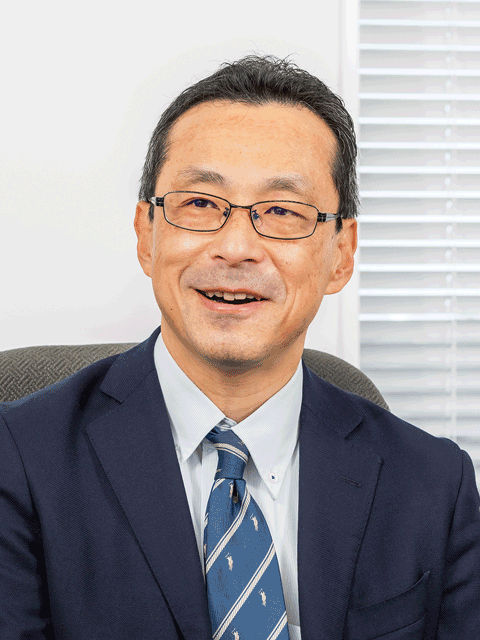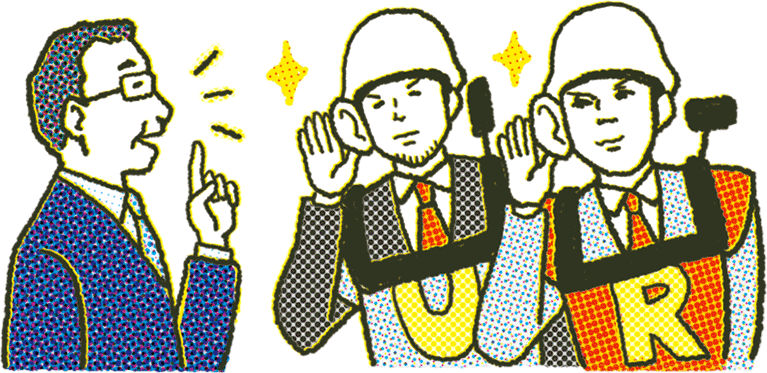Front Line of Rentals (chapter 3)
Switching from Owning to Using Leverages the Power of Resource Recycling
What Is a Circular Economy that Leads to a Competitive Advantage?
Hitachi Construction Machinery sees promoting the rental business as contributing to the circular economy.
We asked professor Yasushi Umeda of the Graduate School of Engineering at the University of Tokyo, who specializes in life-cycle engineering, about trends in the circular economy and efforts to promote it.

Yasushi Umeda
Professor
Graduate School of Engineering
University of Tokyo
After working as an assistant professor in the Department of Mechanical Engineering, Graduate School of Engineering, Tokyo Metropolitan University, and as a professor in the Department of Mechanical Engineering, Graduate School of Engineering, Osaka University, he has been in his current post since 2014. His specialties include life cycle engineering and life cycle design. He is the chief researcher of the 21st Century Public Policy Institute. Publisher of books on the topic of circular economies (available only in Japanese).
What is this circular economy that everyone is talking about?
Unlike Conventional 3R, Circulating Resources and Economic Growth are Linked
The notion of a recycling-oriented society debuted in the 1990s and the 3R initiative (Reduce, Reuse, Recycle) got started in Japan. Since then, the Ellen MacArthur Foundation (HQ in UK) was established in 2010 to promote the circular economy. In 2015 the EU (European Union) announced a policy package that showed the direction to a circular economy. This resulted in a quantum leap in the attention paid to the circular economy around the world. The biggest difference from a 3R society is that we aim to create an economic system that links the strengthening of industrial competitiveness while ensuring employment under the premise of recycling resources.
In the manufacturing industry, the main idea was “selling out of products,” or making, using and disposing of mass quantities of things. However, our sense of this changed upon close observation of how people value “ownership.” Conventionally, the idea is that products realize their greatest value at the point they are purchased. By contrast, the effort to produce value throughout, not just at the point of purchase, but including during and even after use, that is the concept at the core of life cycle engineering that I study, and is key to a circular economy. In other words, it means designing products with a long life in mind, being aware from the outset of maintenance, updates, and reusing the product after its use. Unfortunately, however, the fact is the concept has not yet fully penetrated the manufacturing industry.
Of course, the maker may tend to think that the design cost to ensure full recycling of a product may be a waste if it is not recycled. That said, today using IoT allows us to check data on how much a product was actually used and even whether it could be recycled. Using this kind of digital technology will make it possible to design a more rational product life cycle.

Working Toward a Circular Economy Also Helps Avoid Risk and Create Business
The EU is moving forward with standardization and legislation on the circular economy. Examples of what this includes are specific guidelines at the design stage to make products suitable for the circular economy, such as making them easy to disassemble, and making it possible to update to the latest firmware. These are the kind of efforts the EU is pursuing, but if Japanese companies fail to respond to them, it may result in barriers to entering the EU market. The concepts of the EU are expected to spread around the world, so taking steps now will not only help avoid risk but also lead to business opportunities. Further, we see ESG investment growing in the same way and likely to incorporate the concepts of the circular economy, so failing to respond is apt to have an effect on finance and procurement.
Providing Total Value by Connecting to Customers Based on High Quality Manufacturing
In the first instance, a circular economy cannot be established unless quality goods are produced. Japanese manufacturers have a strong tendency to emphasize the manufacture of goods with excellent quality and this foundation is important. That said, the time has come to look at the life of a product, not being done with it once it’s sold, and shift to the idea of longterm support.
In this sense, I feel Hitachi Construction Machinery is shifting to the direction of taking up the circular economy way of thinking, in addition to creating quality products themselves. The rental business the company is working on is just one of these. As the culture of renting and leasing is widespread in the construction industry, and as the products themselves are expensive, coming up with ways to get products used for a long time is an easy task, especially from the perspectives of maintenance and recycling parts.
So what ends up being the key to it is digital technologies. By using IoT and AI to collect and analyze machine operation data and providing the maintenance in the best form for the customer, the company expects to reduce life cycle costs as well as providing new value, which will lead to recycling of resources.
The most important point is that the supply side and the customer can be linked by making these products into services, including rentals. From the manufacturer’s perspective, Hitachi can provide detailed support via this connection and get to know its customers by collecting their operating data, which can then be used in developing and putting out new products and services.
If the company does a good job of linking product development and technological capabilities, it can make the total value more appealing and make existing strengths all the stronger. And if the company can contribute to the environment by working with its customers to extend the life of its products, it will produce the best possible outcome—wins for the customer, for the company, and for the world.


